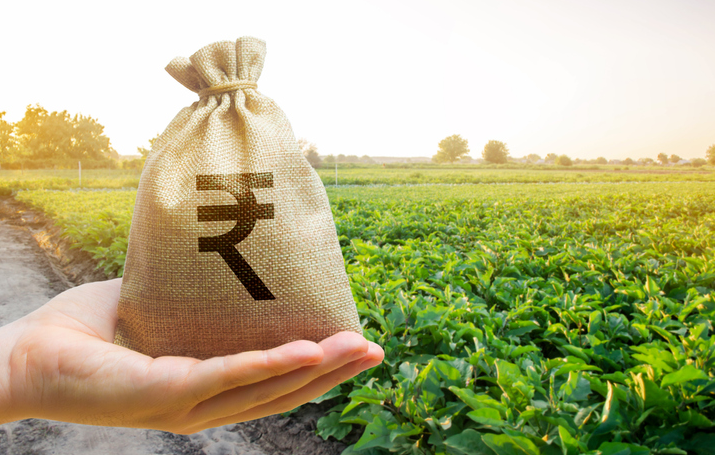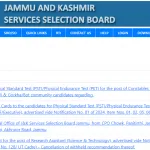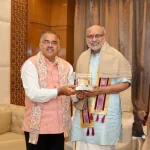The FY 25 budget has earmarked about 1.52 lakh crore to agriculture and allied sector. Over the years, significant efforts to rejuvenate Indian farmers’ prospects through various income-support measures are being undertaken. Also budget allocations for agriculture and allied sectors have steadily increased over the years, and initiatives are in progress to promote technological advancements in these areas.
The essential Nudge
First, over the past several years, price support through food grain procurement has become central to ensuring remunerative prices for farm produce. In the FY 25 budget, the allocation under the umbrella scheme PM AASHA (Pradhan Mantri Annadata Aay SanraksHan Abhiyan) has increased from 2.2 thousand crores to 6.4 thousand crores. This underscores the commitment to providing adequate price support, reducing food grain wastage, and limiting undue market influence by traders. In addition, the umbrella provisions under AIDF (Agriculture Infrastructure Development Fund) in flagship central sector schemes viz., Crop Insurance, Interest Subvention, and RKVY have seen 10-15 percent increase in their outlays.
Second, women comprise 30 percent of agricultural labor force and over 80 percent of economically active women are engaged in agriculture however they earn 20-30percent less than the male counterpart and only 6% have access to institutional credit. In order to diversify their income and adequate participation,provisionof Rs. 500 croreshave been made in FY 25 budget to provide 15,000 drones under NAMO DRONE DIDI which essentially will Philip the participation of rural women and strengthen their economic status.
Third, the Comprehensive Review of Agricultural Research, as introduced in the FY 25 budget, is a much-needed provision. Currently, the apex body ICAR and its institutes, along with State Agricultural Universities (SAUs), dominate agricultural research. This dominance is often being questioned for having limited collective scope of addressing real research problems and finding practical solutions. A decade ago, the World Bank noted that “there is too little connection between research and extension or between these services and the private sector.”
Therefore, involving the private sector through a challenge-based reward system (CBRS), alongside government organizations, could encourage private investment in agricultural R&D. Despite being a major food producer, India ranks 4thin terms of investment in agri R&D as a percentage of Ag. GDP and the FY 25 budget provisions should have been much higher to DARE (Department of Agricultural Research and Education). An independent central organization or body (Agricultural Development Council) on the lines of GST council is crucial for effectively aligning, monitoring, and disseminating practical solutions to the daily challenges faced by farmers.
Fourth, enhancing productivity in agriculture must focus on improving resource use efficiency, as 45% of cultivable land uses about 84% of water, with the three most water-intensive crops—sugarcane, rice, and wheat—consuming over 80% of this water. Notably, India’s productivity has increased faster than in China, the United States, and Brazil over the past decade. It is also crucial to manage infrastructure effectively to handle surpluses resulting from productivity gains. In the context of climate vulnerabilities and extreme weather events, developing and adopting Climate Resilient Crop Varieties (CRCVs) is essential for ensuring food and nutritional security while maintaining crop yield increases. The Climate Resilient Cluster (CRC) approach, within the framework of KVKs, is key to promoting the adoption of CRCVs. Additionally; sustainable increases in crop productivity are vital, as 11 of the 17 Sustainable Development Goals (SDGs) are directly linked to the performance of the agriculture and allied sectors.
Fifth, the proposed establishment of Bio-Input Resource Centres (BIRCs) in the budget could significantly boost the use of organic inputs in agriculture, thereby reducing reliance on input subsidies. The PM Programme for Restoration, Awareness Generation, Nourishment, and Amelioration of Mother Earth (PM-PRANAM) aims to incentivize states to cut down on chemical inputs. However, to drive change and encourage the adoption of BIRC-provided inputs at the farm level, a specific incentive mechanism within PM-PRANAM, supported by FPOs and cooperatives, should be considered. Additionally, there is substantial potential to include livestock feed within the scope of BIRCs.
Sixth, it is important to note that one-third of food inflation in 2023-24 is attributed to vegetables, with their prices rising by 29.3 percent. Promoting the vegetable supply chain and identifying key production and consumption centers is crucial in light of the recent spike in vegetable prices. This approach outlined in budget FY 25 will enhance the disposable income of consumers and increase the producers’ share in the consumer’s rupee. The exclusive blended capital support measures to the tune of Rs. 62.5 crore offered under budget FY 25 to finance startups and rural enterprises engaged in farm produce value chain is invariably a crucial step.
Missing links
First, considering the significant transformation occurring in India’s agriculture and allied sectors, it is essential to implement measures that boost the income of small and marginal farmers. It is well-established that diversifying from traditional crops to high-value fruits, vegetables, and allied enterprises can enhance their income. Such measures should have been included in the FY 24 budget, as they could reignite demand and drive economic growth in the near future.
Second, current support measures to boost crop production have consistently strained resources and increased climate vulnerabilities for farmers. Thus, it is crucial to revisit the concept of Agro-Climatic Zones (AEZ) and Regional Crop Planning. This approach can significantly influence and synergize production patterns and practices across different areas.
Third, market reforms are essential to secure fair prices for farm produce. The 15th Finance Commission has recommended incentives to encourage necessary interventions for modernizing the agricultural marketing system in states. Therefore, it is proposed to develop indicators and a monitoring framework to assess states based on their efforts to modernize the marketing system, which should be included under the Agri. Infrastructure Fund (AIF) of the Integrated Scheme for Agricultural Marketing (ISAM).
The FY25 budget provisions and proposed initiatives mark a significant shift towards improving agricultural efficiency and resilience but falls short of focus on innovations as reflected from R&D expenditure. Recognizing the tangible impact of climate change on small and marginal farmers, the budget was anticipated to address these urgent needs. By focusing on these key areas, India can effectively drive its agricultural transformation and secure long-term growth and sustainability in the sector.
(The Author is Member Official, Commission for Agricultural Cost and Prices CACP, MoAFW, New Delhi, Views expressed are purely personal. Courtesy: PIB)






